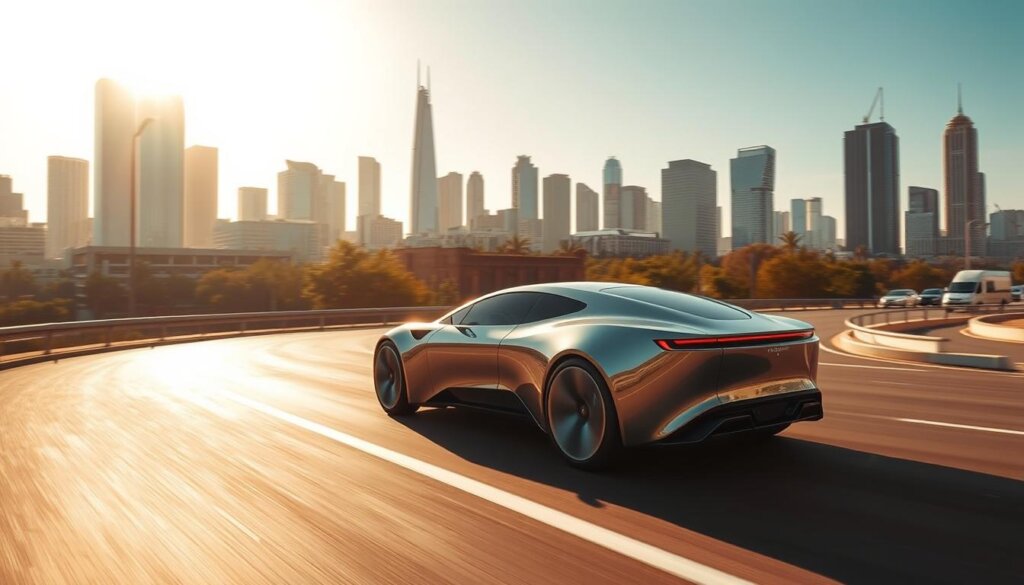Surprising fact: a single fuel cell can make electricity for hours and leave only warm air and water vapor as byproducts.
This section explains how hydrogen acts as a clean energy carrier that moves power and cut emissions in heavy industry and transport. It shows real value for Malaysian cities facing diesel pollution and grid strain from variable renewables.
Global investment now backs large green hubs and electrolyzer builds, which lower risk for adopters. Wellness Group helps local sites assess production, storage, and fuel cell options.
Practical benefits include cleaner urban air, backup power for critical facilities, and new manufacturing jobs. Readers can explore deeper sections and then message Wellness Group on WhatsApp at +60123822655 during business hours for a quick assessment.
Key Takeaways
- Hydrogen offers clean power with water vapor as the main byproduct.
- It supports decarbonizing heavy industry, transport, and the grid.
- Electrolyzer and hub investment reduce adoption risk.
- Local gains include better air quality and energy reliability.
- Wellness Group provides tailored guidance and WhatsApp support.
- Explore lifecycle and infrastructure topics next, or visit hydrogen water guide for a related read.
Understanding hydrogen today: clean energy carrier for power and transport
Hydrogen bridges intermittent renewables and demand, offering a route from surplus electricity into clean transport and on-site power.
At point of use, fuel cells emit only water vapor and warm air. That clean use-phase makes a real difference in busy Malaysian corridors where air quality matters.
Hydrogen production can come from natural gas, coal, solar, wind, nuclear, or biomass. Upstream choices determine lifecycle CO2 and greenhouse impacts.
In transport, hydrogen as a fuel powers long-range vehicles with fast refueling and near-zero tailpipe emissions. For power, stationary fuel cells deliver quiet on-site electricity, while turbines can co-fire and move toward 100% hydrogen.
- Produce when renewable energy is abundant, store as a carrier, then reconvert for electricity when needed.
- Match technology to use: fuel cells for quiet, zero tailpipe sites; turbines for flexible grid support.
For expert help selecting technologies suited for Malaysian sites, contact Wellness Group on WhatsApp at +60123822655 (Mon-Fri 9:30 am-6:30 pm; Sat-Sun 10 am-5 pm).
Key reasons hydrogen matters now in Malaysia’s energy transition
Malaysia can capture near-term wins by shifting select fleets and power sites toward low‑carbon fuels that cut urban pollution and strengthen supply resilience.
Near-zero greenhouse gas emissions and cleaner air from fuel cells
Fuel cell electric vehicles emit only water and warm air at the tailpipe, eliminating NOx, hydrocarbons, and particulate pollutants that harm public health in busy corridors.
Switching heavy buses and trucks away from fossil fuels reduces roadside emissions and lowers transportation sector carbon, while keeping vehicle range and uptime.
Energy security through diverse domestic production pathways
Domestic production from natural gas, coal, solar, wind, and biomass diversifies supply and cuts exposure to imported fuel price swings.
That fuel flexibility allows Malaysia to start with lower‑carbon pathways and shift toward cleaner sources as markets mature.
High efficiency in fuel cells with only water and warm air as byproducts
Fuel cells convert chemical energy into electricity efficiently, making them ideal for sensitive urban and indoor power uses where air quality matters most.
- Early pilots in ports and logistics hubs can deliver quick reductions in gas emissions and local health impacts.
- Localising parts of the value chain supports jobs, skills transfer, and resilient supply.
Malaysian organisations may request an initial consultation via WhatsApp at +60123822655 during Wellness Group business hours for site scoping and next steps.
Why do we need to use hydrogen?
For heavy industries, a clean fuel that acts as both heat source and feedstock offers a practical route away from fossil inputs.
Replacing fossil fuels in hard-to-abate industrial processes
Many industrial processes demand high temperatures or specific chemistry that electric heating cannot match. Green hydrogen produced via electrolysis using renewable electricity can replace carbon‑intensive inputs in steel, ammonia, methanol, and refinery desulfurization.
This switch cuts lifecycle CO2 while keeping output and quality. Plants can start with blends or co‑firing and move toward full adoption as supply and equipment mature.
Supporting renewable energy with long-duration energy storage
Stored gas absorbs excess renewable generation and returns electricity during peak demand or cloudy seasons. That storage provides seasonal balancing and complements batteries for multi-day or multi-week needs.
- High‑temperature heat for hard processes.
- Feedstock replacement in ammonia and methanol plants.
- Long-duration energy storage for grid resilience.
| Industry | Benefit | Storage role |
|---|---|---|
| Steel (DRI) | Lower CO2 in iron reduction | Buffer for electrolyzer output |
| Refining | Desulfurization without fossil feed | Supply during peak demand |
| Chemicals (Ammonia, Methanol) | Cleaner feedstocks, same product quality | Seasonal balancing and resilience |
Project design, safety, and permitting matter. Wellness Group helps Malaysian sites size production, plan storage, and link power needs. For tailored roadmaps covering production, storage, and integration, message Wellness Group on WhatsApp at +60123822655 (Mon-Fri 9:30 am-6:30 pm; Sat-Sun 10 am-5 pm).
Where hydrogen is used: from industry to transportation and power
Across manufacturing floors, transit depots, and grid sites, hydrogen already supports real-world applications that cut emissions and boost uptime.

Industrial processes
Ammonia and methanol plants use hydrogen as a core feedstock, keeping product quality while lowering lifecycle CO2. Refineries employ hydrogen for desulfurization, reducing oil refining emissions during the transition away from heavy fuels.
Transportation
Fuel cell electric vehicles—especially buses and heavy trucks—offer long range and quick refueling at dedicated stations. Centralized fueling at logistics hubs and ports makes early commercial sense, raising utilization and improving economics.
Power and electricity
Stationary fuel cells deliver quiet, efficient on-site electricity for critical facilities. Gas turbines can co-fire gas blends, then migrate toward higher hydrogen content for larger grid support roles.
Specialized sectors
Electronics manufacturers use hydrogen in chemical vapor deposition. Hospitals rely on it for sterilization. Food producers hydrogenate oils for stability, and space programmes use hydrogen where energy density matters.
“Tailpipe outputs from fuel cells are mainly water and warm air, helping reduce roadside greenhouse pollutants and CO2 in urban corridors.”
| Sector | Primary use | Early adopter benefit |
|---|---|---|
| Chemicals (Ammonia, Methanol) | Feedstock replacement | Lower lifecycle CO2 |
| Transport (Buses, Trucks) | Fuel for fuel cell vehicles | Fast refueling, high uptime |
| Power (Fuel cells, Turbines) | On-site electricity and grid support | Quiet operation; flexible dispatch |
| Specialized (Electronics, Healthcare) | Process gases and sterilization | Process reliability and safety |
Project phasing often starts with captive fleets and behind‑the‑fence power. This builds skills and operational data before scaling public stations and wider market rollouts.
For help scoping use cases—from refueling stations to industrial retrofits—contact Wellness Group on WhatsApp at +60123822655 during business hours.
Production, storage, and infrastructure: from green hydrogen to fueling stations
Careful siting and system sizing let sites turn renewable electricity into a usable low‑carbon fuel for long‑range vehicles and heavy industry.
Hydrogen production sources
Options range from electrolysis run on renewable energy to natural gas with carbon controls and biomass routes. Choosing the right hydrogen production path aligns emissions goals with local grid conditions and water availability.
Green hydrogen advantages
Green hydrogen made with renewable energy cuts lifecycle emissions and boosts corporate reporting credibility. It also opens low‑carbon pathways for hard‑to‑abate industry while supporting seasonal balancing.
Storage challenges and solutions
Low volumetric energy density forces tradeoffs. Projects use compressed gas tanks, cryogenic liquid, or chemical carriers depending on duty cycle and footprint.
| Method | Best use | Notes |
|---|---|---|
| Compressed gas | Depots, vehicles | High pressure, common choice |
| Cryogenic liquid | Long range, bulk | Cold storage, higher CAPEX |
| Chemical carriers | Seasonal storage | Lower packing energy density, complex handling |
Building a resilient market and stations
Stand‑up steps include electrolyzer sizing, optimizing capacity factors, permitting, dispenser standards, and telemetry. Range targets (300+ miles for light‑duty) affect on‑board storage capacity and pressure choices.
- Phase pilots with back‑to‑base fleets before public stations.
- Plan grid interconnection, water sourcing, and industrial gas logistics.
- Scale production and stations to lower CAPEX and OPEX across the market.
“Phased deployments cut risk and build supplier experience for broader rollout.”
Wellness Group helps organisations pick production technologies, design storage, and plan stations. Message WhatsApp +60123822655 during business hours for feasibility, vendor selection, and commissioning support.
Benefits, barriers, and the evolving hydrogen market
Malaysia faces clear public-health gains when low-emission fuels replace diesel in buses, logistics fleets, and urban delivery routes.
Public-health and emissions reductions. Fuel cell vehicles emit only water and warm air at the tailpipe, cutting NOx, particulate matter, and urban ozone precursors compared with gasoline and oil diesels. Cleaner on-road fuel lowers local exposure and reduces greenhouse gas and carbon footprints when production uses low-carbon energy.

Balancing benefits with current barriers
Storage system complexity and station CAPEX/OPEX remain material barriers. Early supply-chain limits add cost and delivery risk.
At the same time, electrolyzer rollouts and planned multi-partner hubs show the market gaining scale. As throughput rises, per-unit station costs and fuel prices drop, improving total cost of ownership for fleets and depots.
Where projects make sense first
- Best fits: heavy-duty transportation, backup and prime power, and specific industrial processes that need high-grade heat or feedstock.
- Sequence: start with captive fleets and behind-the-fence power, then expand public refueling and wider industry uptake.
- De-risk steps: robust contracting, performance guarantees, and staged procurement can protect budgets during early deployment.
“Electrolyzer capacity growth and hydrogen hubs point to durable investment and steady cost declines as the market matures.”
For a concise project framework—covering emissions impact, operational fit, infrastructure readiness, and market timing—contact Wellness Group at +60123822655 during business hours for tailored guidance that reduces risk and accelerates adoption.
Talk to Wellness Group about hydrogen solutions in Malaysia
Wellness Group guides Malaysian organisations through practical choices for production, storage, and fuel cell deployment. They match project scope with local grid limits, water availability for electrolysis, and site safety needs.
Personalized guidance on hydrogen production, storage, and fuel cells
End‑to‑end support covers how hydrogen produced on-site or procured fits an operational plan.
- Assess production and production sourcing, electricity interconnection, and water needs for electrolysis.
- Size storage and system elements for depot or industrial duty cycles.
- Select fuel cells and balance‑of‑plant for transportation and stationary power use.
- Advise on safety, codes, training, and phased replacement of fossil fuels.
Contact and business hours
Message Wellness Group on WhatsApp at +60123822655 for quick scoping or to book a site visit.
Business hours: Monday–Friday 9:30 am–6:30 pm; Saturday–Sunday 10 am–5 pm.
“Fuel cells generate electricity from hydrogen with only water and warm air as outputs at the point of use.”
Conclusion
, Practical steps can help industry and transport swap carbon‑intensive fuels for cleaner options while keeping uptime and heat needs intact. This path cuts CO2 and local emissions and protects operational performance.
Fuel cells emit only water vapor and warm air at the point of use, a clear benefit when production choices limit lifecycle greenhouse gas emissions. Storage design must respect low volumetric energy density and pick compressed, cryogenic, or carrier solutions that match the process and duty cycle.
Green hydrogen made with renewable energy supports grid balancing and industrial decarbonization. For help mapping hydrogen production and storage, message Wellness Group on WhatsApp at +60123822655 or read a related note on hydrogen and health. Early pilots create learning that cuts cost and risk as the market scales.
FAQ
What makes hydrogen a promising clean energy carrier for power and transport?
It offers near-zero greenhouse gas emissions at point of use when produced from renewable electricity. Fuel cells convert chemical energy into electricity with high efficiency and only water and warm air as byproducts, improving urban air quality and lowering local pollution.
How can hydrogen improve energy security in Malaysia?
Domestic production can come from renewable electricity, natural gas with carbon controls, and biomass pathways. This diversity reduces reliance on imported oil and gas and supports grid resilience by providing a long-duration storage option for surplus renewable power.
In which industrial processes is hydrogen already critical?
Industry uses include ammonia and methanol synthesis, refinery desulfurization, and low-carbon steelmaking. Switching to low-carbon hydrogen helps decarbonize hard-to-abate sectors where direct electrification is difficult.
What role does hydrogen play in transportation?
Fuel cell electric vehicles — including cars, buses, and heavy trucks — run longer ranges and refuel faster than many battery options. Hydrogen refueling stations paired with a regional network support heavy-duty and long-haul applications.
How does hydrogen support renewable energy integration?
It stores excess solar and wind generation as chemical energy for later use. Converted back to power or burned in turbines or fuel cells, it provides dispatchable energy for periods of low renewable output.
What are the main production pathways and their emissions profiles?
Production options include electrolysis powered by renewables (low lifecycle emissions), steam methane reforming with carbon capture (lower emissions than unabated fossil), and biomass conversion. Lifecycle emissions vary with feedstock and process controls.
Why is green hydrogen highlighted for lowering lifecycle emissions?
Green hydrogen uses renewable electricity for electrolysis, avoiding fossil inputs. With careful sourcing and grid integration, it can deliver significant emissions reductions across production, transport, and end use.
What storage challenges exist, and what solutions are available?
Storage options face trade-offs in capacity, pressure, and temperature. Solutions include high-pressure tanks, cryogenic liquid storage, underground caverns, and chemical carriers like ammonia or LOHCs. Choice depends on application, scale, and economics.
How will a resilient hydrogen market and station network develop?
Growth requires coordinated policy, clear safety standards, investment in refueling infrastructure, and demand from transport and industry. Public-private partnerships and pilot projects help build supply chains and lower costs.
What health and emissions benefits come from switching from fossil fuels?
Fuel cell deployment reduces NOx, SOx, and particulate emissions at the point of use, improving respiratory health in cities. Lifecycle CO2 reductions depend on production pathways but can be large when low-carbon sources are used.
How can companies get personalized guidance on production, storage, and fuel cells?
Wellness Group provides tailored consultations for project feasibility, system design, and implementation in Malaysia. They help match technology choices to operational needs and regulatory requirements.
How can interested parties contact Wellness Group for inquiries?
Reach out by WhatsApp at +60123822655. Business hours are Mon–Fri 9:30 am–6:30 pm and Sat–Sun 10 am–5 pm for consultations and follow-up.






